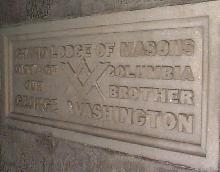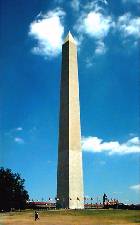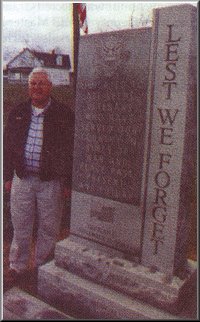For more information, see:
Related Topics:

"The principle office of history I
take to be this: to prevent virtuous actions from being forgotten, and that evil words and
deeds should fear an infamous reputation with posterity."
Tacitus (c.55-c.120 AD), Roman Historian
Its members are part of the oldest and largest fraternity in the world, and so it seems natural that Freemasons would preserve and protect history. This activity takes on many different aspects.
|
Local lodges often retain memorabilia and records and Grand Lodges do likewise. These are frequently displayed for the public to see and enjoy - and not all of the items relate strictly to Freemasonry. | |
|
Masons become part of activities which help to create, preserve and/or protect a heritage which we share. Whether it's raising funds or simply working as individuals, this involvement is a satisfying way of contributing to the enrichment of life of our fellow men and women. | |
|
And last, but not least, Freemasonry has given 'gifts' to the nations in which it exists to help the peoples of that country more fully enjoy its heritage. |
Below and on separate pages which you can see identified on the left, we've provided just a few examples of this important work which Masons do. It may be a part of the fraternity which you've overlooked and which we're pleased to present.
![]()
Washington Monument
For American Freemasons, one such example is their involvement with the building as well as the current refurbishing of the U.S. Washington Monument (not to be confused with the George Washington Masonic National Memorial).
Authorized by Congress in 1833, construction was not begun until 1848. Architect Robert Mills (a Mason) was hired by the privately funded Washington National Monument Society to design a great column with a colonnade at its base. It was intended that the colonnade would have heroic statues of Washington and other revolutionary heroes and founding fathers. Financial considerations forced the abandonment of the colonnade and statues.
On July 4, 1848, in an impressive ceremony attended by virtually every government official, M.W. Benjamin B. French, Grand Master, Grand Lodge of the District of Columbia, laid the cornerstone of this famous monument in a Masonic ceremony. The Washington National Monument Society, in charge of fund raising of the Monument, sensed the importance of Washington's Masonic membership and the great pride that masons felt across the country for their brother, Washington, the father of the country. The Society in 1851 and 1853 solicited members of the Masonic Order nationally through the Grand Lodges, to make contributions to the construction of the monument and some 250 Masonic Lodges contributed to the building of the Monument which contains 22 Masonic memorial stones contributed by 14 Grand Lodges and 8 individual Lodges. In addition, many other Masonic Orders including the Scottish Rite, Royal Arch, and Knights Templar contributed to the construction of the Monument.
 The
first Masonic stone ascending the Monument is that of the Grand Lodge of the District of
Columbia at the 50 foot landing. This earliest Masonic contribution was no doubt tied into
the cornerstone laying ceremony where the Grand Lodge of D.C. presided. The United States
National Park Service has a very extensive and interesting section of the Memorial's
web site
specifically devoted to the Masons' contributions and which shows all of
the stones contributed by Masons.
The
first Masonic stone ascending the Monument is that of the Grand Lodge of the District of
Columbia at the 50 foot landing. This earliest Masonic contribution was no doubt tied into
the cornerstone laying ceremony where the Grand Lodge of D.C. presided. The United States
National Park Service has a very extensive and interesting section of the Memorial's
web site
specifically devoted to the Masons' contributions and which shows all of
the stones contributed by Masons.
By 1854, the Washington National Monument Society had exhausted its funds and all work stopped at the 150 foot level. Turmoil within the Society, bad economic times, and the fury of the coming Civil War and its aftermath would halt monument construction for 22 years. There is still a discernible line between courses of differing stonework indicating the resumption of Monument construction funded now by Congress on August 2, 1876, and spurred on by the centennial celebration of the Declaration of Independence.
 Whether or not Society Secretary John Carrol Brent was moved by the
letter from the Lodge in Roxbury, Massachusetts, he began to again send solicitations to Masonic bodies and other fraternal orders. Between July and September
1874 over two hundred pledges were received by the Society from every part of the country,
chiefly from the Masons, Odd Fellows, Knights of Pythias, Red Men, and other fraternal
bodies. On April 15, 1875, 211 Masonic lodges across the country responded to Brent's call
including four Grand Lodges (Florida, Illinois, Massachusetts and Ohio, the last three
giving $1000 each). The average lodge gave between 10 and 50 dollars. Mithras
Lodges of Perfection, A.A.S.R, Washington D.C. made a contribution as did 24 Royal Arch
Chapters and 5 Commandaries.
Whether or not Society Secretary John Carrol Brent was moved by the
letter from the Lodge in Roxbury, Massachusetts, he began to again send solicitations to Masonic bodies and other fraternal orders. Between July and September
1874 over two hundred pledges were received by the Society from every part of the country,
chiefly from the Masons, Odd Fellows, Knights of Pythias, Red Men, and other fraternal
bodies. On April 15, 1875, 211 Masonic lodges across the country responded to Brent's call
including four Grand Lodges (Florida, Illinois, Massachusetts and Ohio, the last three
giving $1000 each). The average lodge gave between 10 and 50 dollars. Mithras
Lodges of Perfection, A.A.S.R, Washington D.C. made a contribution as did 24 Royal Arch
Chapters and 5 Commandaries.
Today, Masons are again involved in supporting the Washington Memorial with DC Masons having contributed in excess of $40,000 towards its renovation. It's just one more example of Masons honoring their country.
![]()
Veterans' Memorials
Recognizing the heroic acts of all veterans of all countries' wars is always an important part of Freemasonry. In many lodge rooms, there are plaques or pictures honoring members of that lodge who served their country in time of need. This remembrance of history extends far further, though.
As a recent example, the Scottish Rite (Northern US Masonic Jurisdiction) Valley of South Bend, Indiana have recently raised nearly $32,000 to donate a beautiful memorial to honor veterans at the developing Military Honor Park on the grounds of the South Bend Airport. The five-sided memorial honors the five branches of the US military (Army, Navy, Marines, Air Force, and Coast Guard).
![]()
 Another Veteran's Memorial
Another Veteran's Memorial
Thanks to the support of Masons from the Leeds-Wayne area of Maine, and a Community Betterment Grand from the Grand Lodge of Maine, Leeds now has its first new Veterans' Monument since just after the Civil War. The project was spearheaded by the Late Brother Robert C. Addison, Sr. who died before the memorial was erected. It was dedicated on Veterans' Day, Nov. 11, 1998. According to his widow, Vivian, Brother Addison "made the down payment on the stone in April, planning for the November 11 dedication." He went into the hospital again in May, and, never came out but work on the monument continued and today it stands on land owned by the Leeds Community Church.
Thanks to the Maine Mason for this story.
![]()
The Bunker Hill Monument and more to come - STAY TUNED!
![]()










